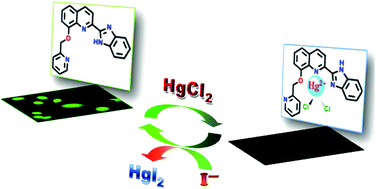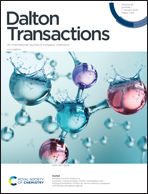A fluorescent “ON–OFF–ON” switch for the selective and sequential detection of Hg2+ and I− with applications in imaging using human AGS gastric cancer cells†
Abstract
A new fluorescent “on–off–on” probe (BIPQ) is designed and developed which selectively binds with Hg2+; its emission intensity is quenched almost 40-fold at 455 nm without interference from other metal cations. On gradual addition of I− to the solution of BIPQ-Hg2+, the emission reverts to its original intensity. The limits of detection of BIPQ for Hg2+ and I− are found to be on the order of 3.12 × 10−9 and 5.48 × 10−8 M, respectively, which shows clearly that BIPQ can sense Hg2+ at a very minute level. DFT and TDDFT studies are conducted with the probe to establish similarity between theoretical and experimental outcomes. Finally, to demonstrate its practical benefit in biological fields, live cell imaging experiments with BIPQ are carried out to detect Hg2+ in human AGS gastric cancer cell lines.



 Please wait while we load your content...
Please wait while we load your content...